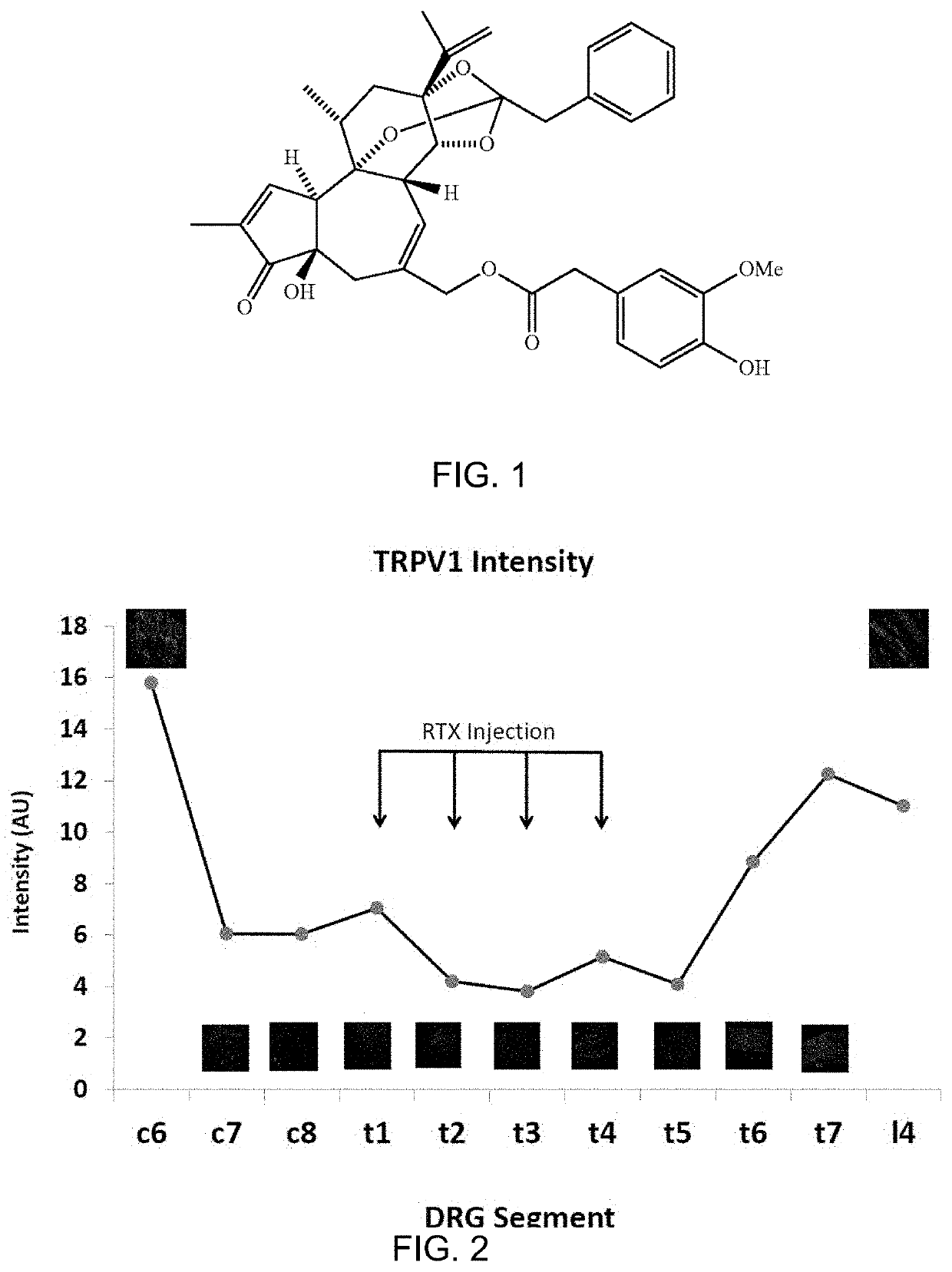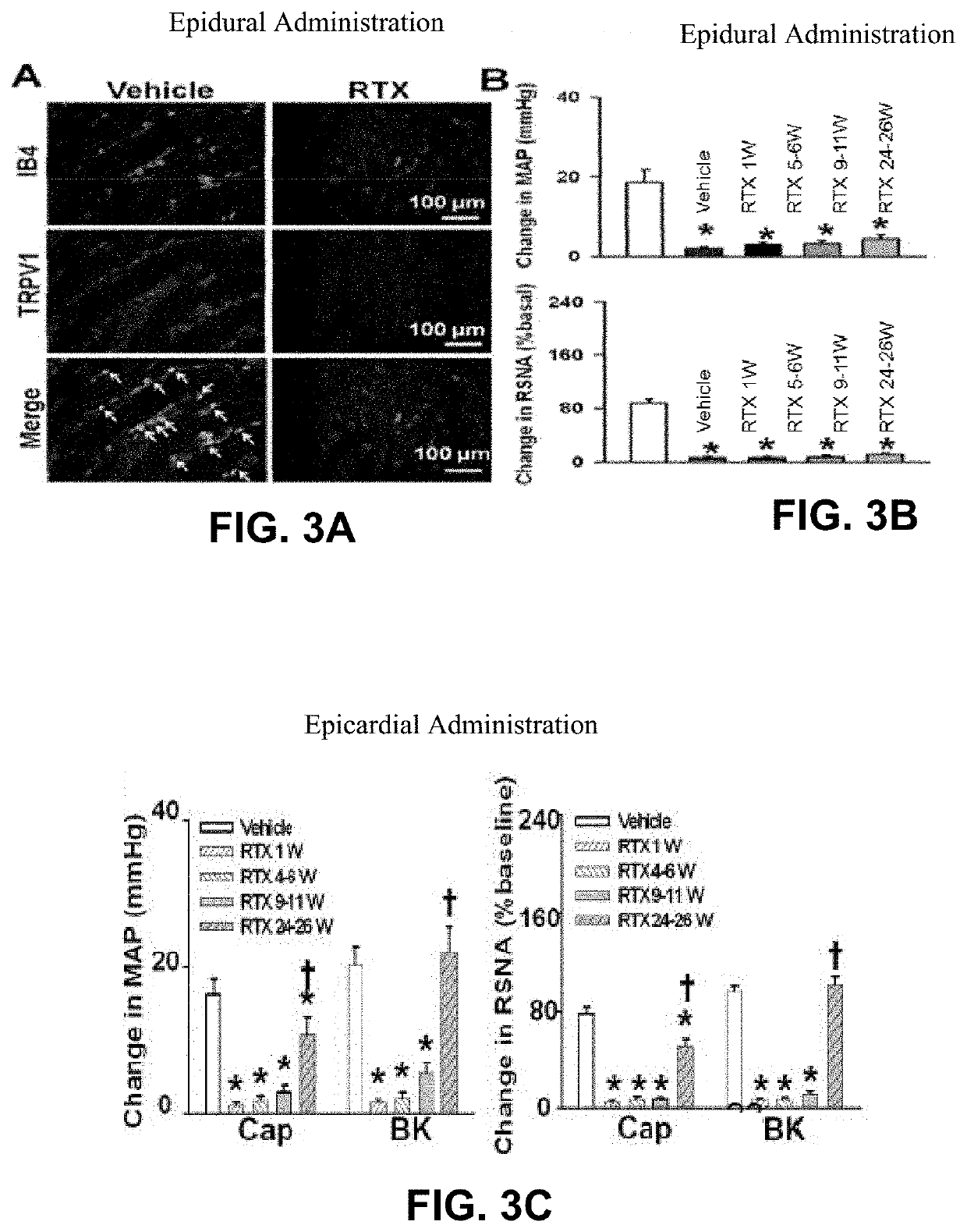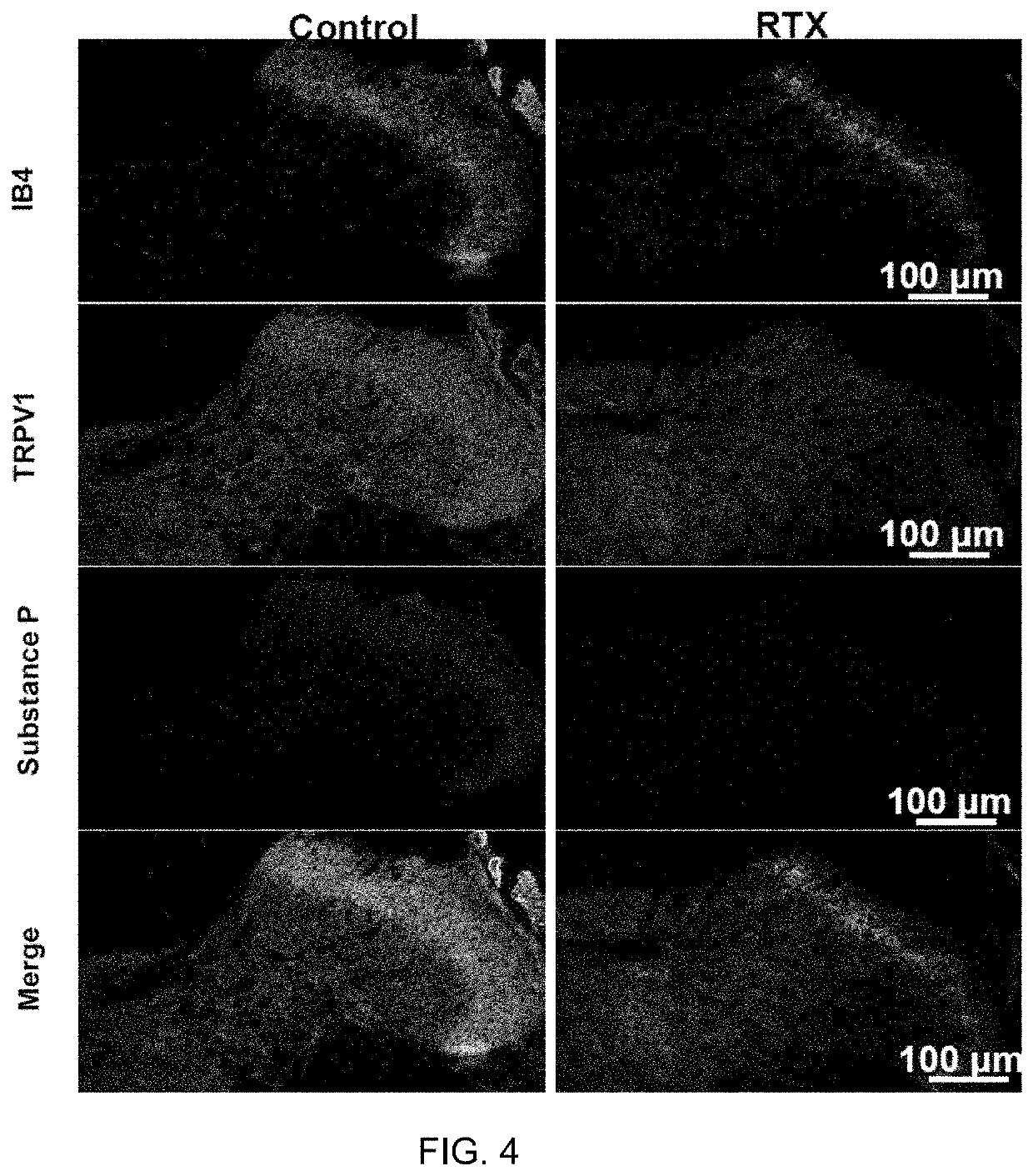Methods for Administration and Methods for Treating Cardiovascular Diseases with Resiniferatoxin
a technology of resiniferatoxin and cardiovascular disease, which is applied in the direction of drug compositions, pharmaceutical delivery mechanisms, medical preparations, etc., can solve the problems of refractory hypertension, damage to the cardiovascular system, and damage to the health of subjects, so as to reduce the potential adverse effects, less invasive treatment, and the effect of reducing the risk of cardiovascular diseas
- Summary
- Abstract
- Description
- Claims
- Application Information
AI Technical Summary
Benefits of technology
Problems solved by technology
Method used
Image
Examples
example 1
[0064]FIGS. 3A-4B show experimental results for a rat study in accordance with an embodiment of the present application. FIG. 3A shows experimental data from a rat model showing isolectin B4 (IB4) and TRPV1 response for rat populations without epidural RTX injection and with epidural RTX injection. FIG. 3B shows experimental data from a rat model showing the mean arterial pressure (MAP) and renal sympathetic nerve activity (RSNA) for a population without RTX treatment (vehicle) and a population with epidural RTX treatment, measured over a 26 week period. FIG. 3C shows experimental data from a rat model showing MAP and RSNA for a population without RTX treatment (vehicle) and a population with epicardial RTX treatment, measured over a 26 week period.
[0065]FIG. 3A shows a reduction in isolectin B4 (IB4) and TRPV1 expression in DRG neurons of various sizes following RTX treatment as compared to the vehicle-only treatment, which shows visually-apparent increased expression. FIG. 3B show...
example 2
[0067]FIG. 4 shows experimental results for a rat study in accordance with an embodiment of the present application. FIG. 4 shows images of the dorsal horn of the spinal cord at T2 stained for both TRPV1 and Substance P (SP) comparing a subject that received RTX injection to a control subject. Epidural application of RTX at the T1-T4 DRG levels ablated almost all SP-containing C fiber afferents (peptidergic) and a large portion of isolectin B4 (IB4)-positive C fiber afferents (non-peptidergic) that project to the dorsal horn of the thoracic spinal cord. FIG. 4 shows reduced expression of TRPV1 protein and destruction of IB4 containing cell bodies, suggesting that small diameter neurons were ablated. Neurons in the dorsal horn of the spinal cord that express SP were ablated by RTX. IB4 is an indicator of small diameter afferent nerves and SP is an indicator of neuroinflammation. In each case, the reduced expression is visibly apparent from the reduced signal in the images from the RT...
example 3
[0068]FIG. 5 shows experimental results for a rat study in accordance with an embodiment of the present application. FIG. 5 shows experimental data of cardiac function for each of four populations of Sprague-Dawley rats: sham rats with vehicle-only administration (column A), sham rats with epidural RTX administration (column B), rats with induced chronic heart failure (CHF) with vehicle-only administration (column C), and rats with induced chronic heart failure (CHF) with epidural RTX administration (column D) (n=9-16 for each group). The experimental data included: body weight, heart weight, the ratio of heart weight to body weight (HW / BW), the ratio of wet lung weight to body weight (WLW / BW), the left ventricle end systolic pressure (LVESP), the left ventricle end diastolic pressure (LVEDP), maximum first derivative of left ventricular pressure (dp / dtmax), the minimum first derivative of left ventricular pressure (dp / dtmin), and infarct size. Statistically significant values again...
PUM
| Property | Measurement | Unit |
|---|---|---|
| volume | aaaaa | aaaaa |
| volume | aaaaa | aaaaa |
| weight | aaaaa | aaaaa |
Abstract
Description
Claims
Application Information
 Login to View More
Login to View More - R&D
- Intellectual Property
- Life Sciences
- Materials
- Tech Scout
- Unparalleled Data Quality
- Higher Quality Content
- 60% Fewer Hallucinations
Browse by: Latest US Patents, China's latest patents, Technical Efficacy Thesaurus, Application Domain, Technology Topic, Popular Technical Reports.
© 2025 PatSnap. All rights reserved.Legal|Privacy policy|Modern Slavery Act Transparency Statement|Sitemap|About US| Contact US: help@patsnap.com



